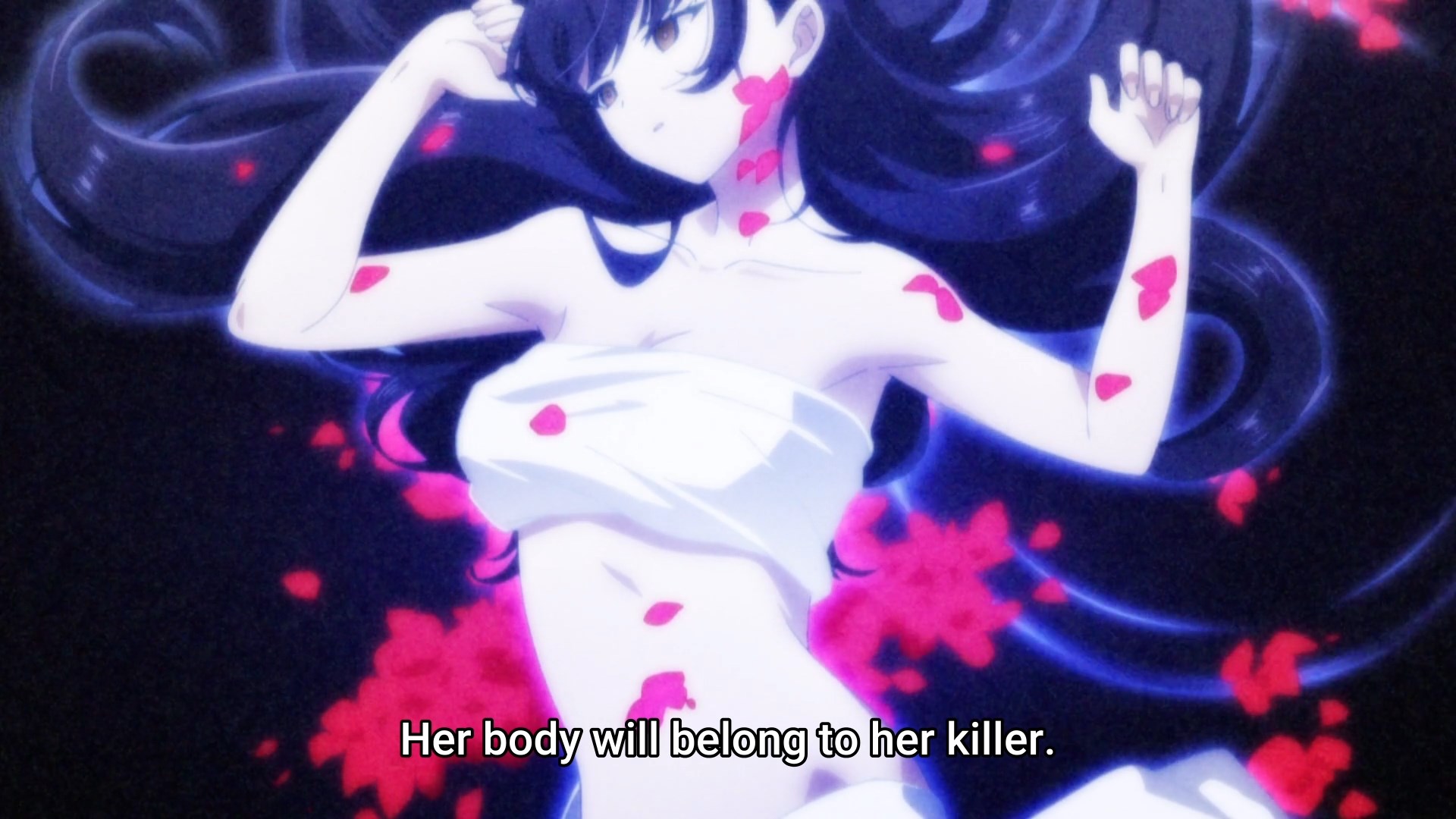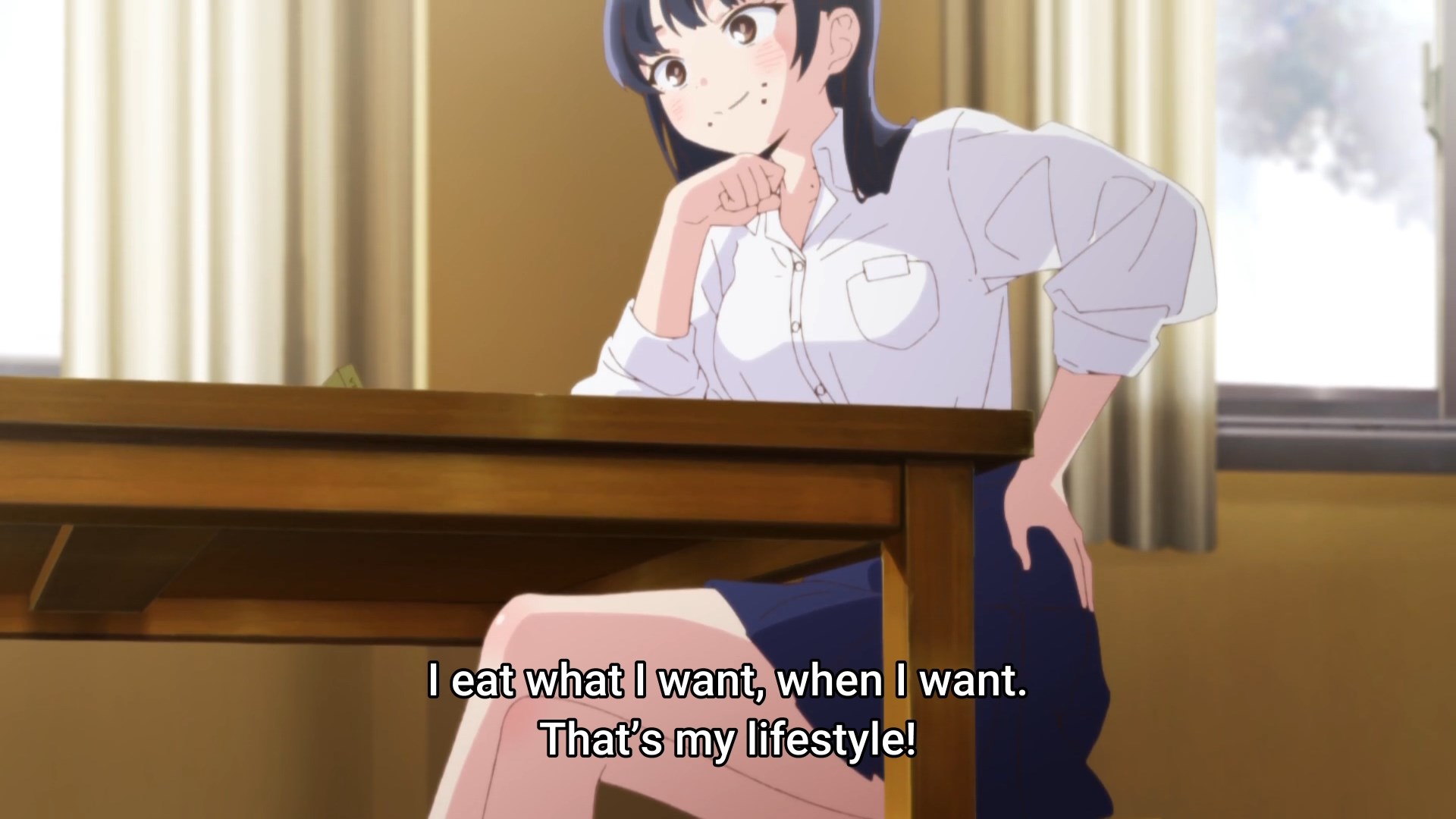Edgelord has murderous fantasies about his class mates, especially about the most popular girl in his class.

And then he discovers she’s a egocentric, clumsy airhead who doesn’t know how to read the room and all his hatred and anger evaporates.

A loser protagonist discovering the class idol’s hidden imperfections is a staple of anime romcoms of course. What’s new is our protagonist being, well, an incel. The heroine having to prove her humanity so that the protagonist doesn’t murder her isn’t as sweet as “she’s actually very shy rather than cool and only he knows it”. It would be horrible to start a romantic comedy this way. Boku no Kokoro no Yabai Yatsu‘s setup therefore had me anxious. Luckily it turns out the protagonist, Ichikawa Kyoutarou, is not so much an incel as a chuuni. He has his fantasies but they feel as unrealistic as somebody who’s worried the dragon sealed away in his left hand will awaken. It helps that the anime doesn’t dwell on them.
The impression I got from this first episode was that there was more to Ichikawa’s obsession with Yamada Anna than her status as the prettiest girl in his class. It felt more personal; there were hints at a backstory that might explain it. for a start, he is much too protective of her. Twice this episode he did something self destructive to get her out of an unpleasant situation. You don’t do that for somebody you only started liking because you caught her eating crisps in the school library. He went from would-be killer to protector far too quickly.
We haven’t gotten much insights into Yamada so far. We don’t even know if she’s really the class idol Ichikawa thinks she is. She doesn’t seem to be that different with her friends than when he caught her alone. Has he just built her up in his head to be this amazing cool person? It will be interesting to see what the series will make of this, and some of the small hints that Yamada too had her eye on Ichikawa.